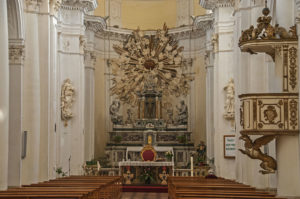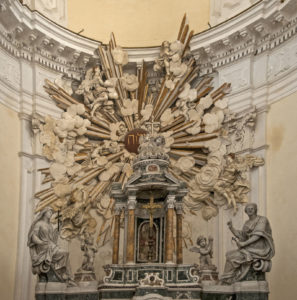The interior of the church is preceded by an oval
vestibule
placed transversally to the major longitudinal axis divided into three naves marked by arcades with Corinthian half columns and covered by a
barrel vault
with lunettes.
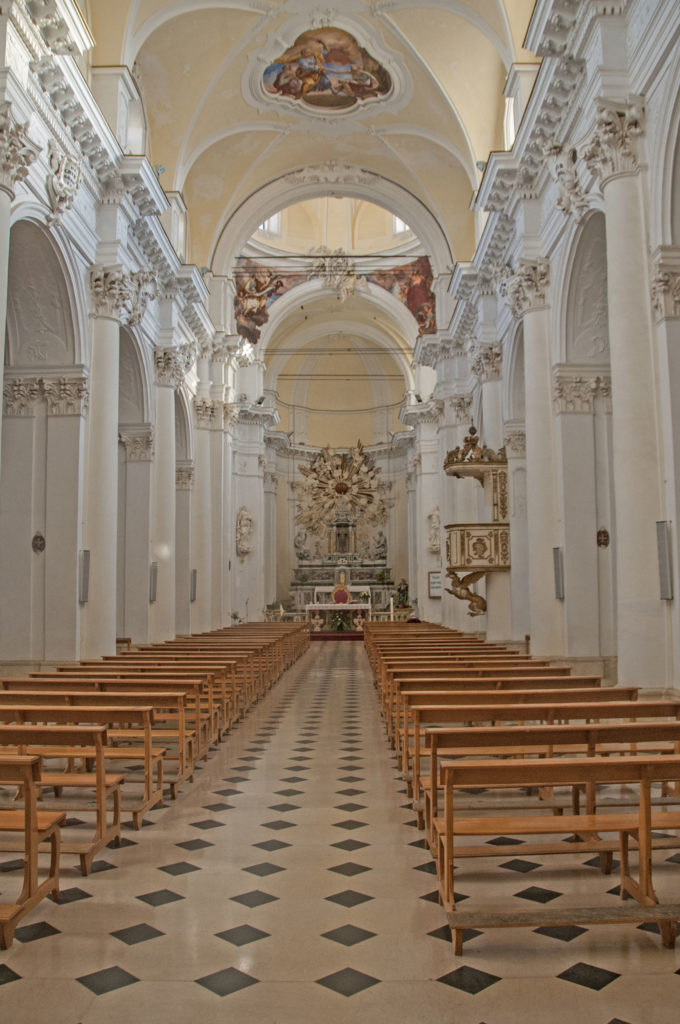
The vault is frescoed with three large works circumscribed by curvilinear frames attributed to
Costantino Carasi
depicting the Transfiguration, the Healing of the Paralysed Man and in the centre, in the largest fresco, the Triumph of Agnus Dei.
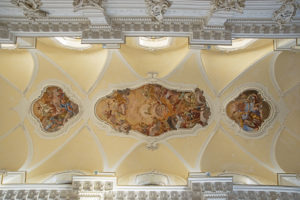
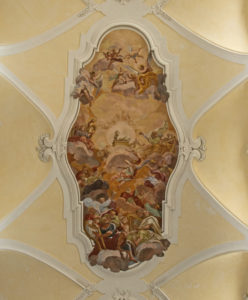
Other frescoes are present on the
pendentives
of the dome with depictions of the Evangelists, and below are four statues representing the cardinal virtues: Temperance, Fortitude, Justice and Prudence.
In the chancel, above the entrance of the church, there is a finely crafted 18th-century organ.
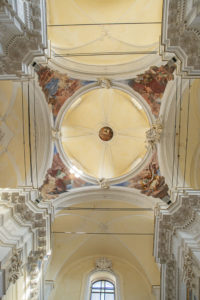
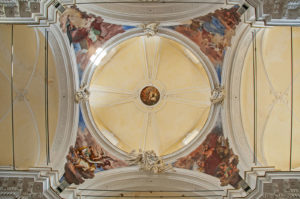
The church also houses numerous paintings including “Il sacrificio di Isacco” (The Sacrifice of Isaac), “San Carlo Borromeo visita gli appestati” (St. Charles Borromeo visits the plague victims), and “Ignazio De Loyola” (Ignatius of Loyola) from the 18th century.
The majestic main altar from the ancient Jesuit church of
Noto antica
is characterised by the triumph of golden rays that encroach upon the
trabeation
above: In the centre of these, enclosed between small yellow marble columns, there is a statuette of Christ. Finally, placed at its sides there are two marble statues by sculptor Giuseppe Giuliano symbolising Faith and Hope.
